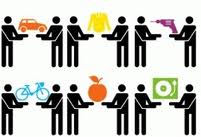Euro-Zone Mosaic Isn’t a Pretty Picture
 Escribe Irwin Stelzer en The Wall Street Journal–A mosaic consists of bits that, taken alone, don’t mean much: put those individual tesserae, or tiles, together, and you can have a work of art. So, too, with the news about the latest turn in the euro-zone crisis. We all know the picture that has been painted on a broad canvas. German Chancellor Angela Merkel can be seen persuading a bare majority of members of her coalition to support an increase to €211 billion ($282.47 billion) from €123 billion in the guarantees Germany will provide the €440 billion European Financial Stability Facility (EFSF), and allow it to buy bonds, recapitalize banks and issue liquidity loans. Note: no cash will change hands.
Escribe Irwin Stelzer en The Wall Street Journal–A mosaic consists of bits that, taken alone, don’t mean much: put those individual tesserae, or tiles, together, and you can have a work of art. So, too, with the news about the latest turn in the euro-zone crisis. We all know the picture that has been painted on a broad canvas. German Chancellor Angela Merkel can be seen persuading a bare majority of members of her coalition to support an increase to €211 billion ($282.47 billion) from €123 billion in the guarantees Germany will provide the €440 billion European Financial Stability Facility (EFSF), and allow it to buy bonds, recapitalize banks and issue liquidity loans. Note: no cash will change hands.
In the background are euro-zone powers-that-be, sitting around a table planning to solve the problem created by too much sovereign debt by issuing still more debt, whether in the form of a eurobond (no to that, says Ms. Merkel), leveraging up the size of the EFSF from a puny €440 billion to several trillion euros (you remember leveraging from the good old days right before the bank bailouts in the U.S.), or increasing the borrowing activities of the European Central Bank. Again, no cash, no new equity, even though the International Monetary Fund estimates that there are about €3 trillion in outstanding bonds issued by countries that are now regarded as credit risks, and that euro-zone banks face about €300 billion in losses from write-downs of sovereign debt.
The picture is deliberately blurred by its creators, as their plans to heap debt upon debt must be executed in such a complex way that voters won’t realize that they have transferred still more wealth to Club Med. Even if cash doesn’t move, by taking on the contingent liability of making good on any EFSF losses, countries will have lowered their credit ratings, and will have to pay more to borrow—a cost no less real even though hidden from the sight of most voters.




